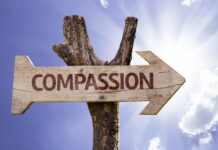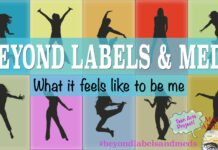New research shows that children of color who grow up in impoverished neighborhoods with lower indices of opportunity have poorer mental health outcomes than their white peers. The study, published in Clinical Psychological Science, was conducted in the largest county in the United States, Los Angeles County, over three years and found that Black and multiracial youth are overrepresented in mental health crisis emergency calls and interventions.
“Socioecological theory has long recognized that children develop in the context of multiple environments, including family and home environments, neighborhoods and schools, and broader society. At the individual and family levels, known determinants of mental health inequities in early childhood include maternal psychological distress, parenting behaviors, and socioeconomic factors such as employment and household income. At the neighborhood level, concentration of poverty, social capital (e.g., capacity of neighbors to intervene in neighborhood problems), built environment (e.g., access to green space), and safety (crime, exposure to community violence) have been identified as key factors influencing child mental health outcomes such as substance use, conduct problems, and suicidal thoughts and attempts,” the authors, led by psychologist Belinda Chen at UCLA, explain.
“Yet in clinical psychological science, relatively little attention has been paid to neighborhood-level determinants of youth mental health.”
 In their paper, “Mapping Racial/Ethnic Disparities in Youth Psychiatric Emergencies and Associations with Neighborhood Racial Composition, Child Opportunity, and Inequality,” the US-based authors note that a child’s zip code and the neighborhood is more important than their genetic code when it comes to determining their life chances and mental health.
In their paper, “Mapping Racial/Ethnic Disparities in Youth Psychiatric Emergencies and Associations with Neighborhood Racial Composition, Child Opportunity, and Inequality,” the US-based authors note that a child’s zip code and the neighborhood is more important than their genetic code when it comes to determining their life chances and mental health.
In particular, youth of color, Black, Latinx, and American Indian/Alaskan Native children are at a distinct disadvantage, as they are overrepresented in low-income, low-opportunity neighborhoods across the USA. Indeed, white children consistently score significantly higher than their peers of color in the Childhood Opportunity Index (COI), a composite metric of a neighborhood’s resources and living conditions.
These inequities that extend beyond socioeconomic status and social class and unto the sphere of structural and systemic racism affect BIPOC youth mental health outcomes, the authors reveal.
“Between 2011 and 2015, there was a 28% overall increase in psychiatric emergency department visits per 1,000 youth. This increase in youth psychiatric emergency department visits was sharpest among youth of color, with 54% and 91% increases among Black and Latinx youth, respectively.”
Given the above statistic, the authors felt it was both novel and nuanced to track the government-funded Mobile crisis response (MCR) program’s engagement and interactions with BIPOC youth service users in Los Angeles County.
“Because MCR programs are field-based, with response occurring in the crisis environment itself, these encounters capture rich data about real-time contextual factors (e.g., crisis call location, neighborhood context in which the crisis response takes place) that may contribute to the emergence of youth psychological crisis but would otherwise be lost in a traditional psychiatric emergency department setting.”
The authors first began by identifying local zip codes to include in their descriptive analyses of neighborhood opportunity and the frequency of youth MCR use. Then, by following these MCR programs, the authors compared this data with local census data, finding that neighborhood opportunity levels are, indeed, correlated with poorer mental health outcomes for BIPOC youth.
Of the 284 zip codes identified, the overall mean childhood opportunity score was 53.63, with a median of 55.44. After confirming the ‘goodness of fit,’ the authors ran multiple statistical tests. They found that the density and frequency of MCR use were highest in low-income, low-opportunity, predominantly BIPOC communities.
The authors highlight in their discussion that:
“Black and multiracial youth were overrepresented in MCR encounters relative to their LA County population LACDMH representation, whereas AAPI and White youth were notably underrepresented in MCRs relative to their county representation but overrepresented in MCRs relative to their LACDMH representation… When considering all neighborhood factors simultaneously in predicting frequencies of youth psychiatric emergency encounters across the study period, we found that larger Black youth populations and higher levels of educational opportunity inequality predicted higher incidence of psychiatric emergency response at the zip code level.”
Black youth suicidality has been rising in the US for years. In addition, other youths of color have also experienced worsening mental health. With this new research, the question becomes less about an increase in mental disorders and more about an increase in community alienation and a decrease in opportunity.
****
Chen, B. C., Lui, J. H., Liu, V., Wright, B. A., Benson, L. A., Lin, Y. J. R., & Lau, A. S. (2022). Mapping Racial/Ethnic Disparities in Youth Psychiatric Emergencies and Associations With Neighborhood Racial Composition, Child Opportunity, and Inequality. Clinical Psychological Science, 21677026221121762. (Link)















How is this new research? Have no mental health orgs researched systemic racism or the effects of poverty?
On a related note, they still give people GAF scores aka a pro is allowed to tally the points that determine their degree of violence towards the client.
GAF scores- GLOBAL ASSESSMENT OF FUNCTIONING/ giving another human’s life a grade score.
The pro’s own systemic racism and implicit bias = lower GAF scores
Maybe they should start banning GAF scores? Maybe the pros should understand their own implicit bias? Maybe there should be constraints on their authority to determine someone else’s life?…. Maybe healers shouldn’t also be cops? Maybe doctors shouldn’t be jailers? What if they just separated the MH Field from the judicial field and ensured human rights?
Here is an example: I used to get GAF Scores in the 50s because paid domestic work aka cleaning houses, walking dogs counts as unemployed. I am certain that these GAF scores correlate to all systemic racism and classism.
The bar is way too low that this counts as new research. Anyone with lived experience as a SMI patient knows that the MH field hates the marginalized
Would be better if the professionals were fixing their field
Actual change > performance
*Just checked and they’re rolling out the WHODAS score now to replace GAF. idk if it’s better or worse
Report comment
How are ex-patients supposed to read these words and not feel furious?
“Black youth suicidality has been rising in the US for years. In addition, other youths of color have also experienced worsening mental health. With this new research, the question becomes less about an increase in mental disorders and more about an increase in community alienation and a decrease in opportunity.”
Nowhere in this does the blame go where it is deserved: to the psych field. The mental health field is exempting themselves from this study because systemic and structural racism and classism is partly their fault. Psychiatry has always, since its inception and still, existed to socially stratify alongside every other injustice. They perpetuate injustice.
They decrease opportunities
then they control the narrative so they can pretend they’re helpful.
Report comment
“Maybe in 20 years, they’ll “discover” what I keep telling them”
– a joke often told between psych survivors, usually in solidarity and for reprieve from the absurdity of modern mental healthcare
Report comment